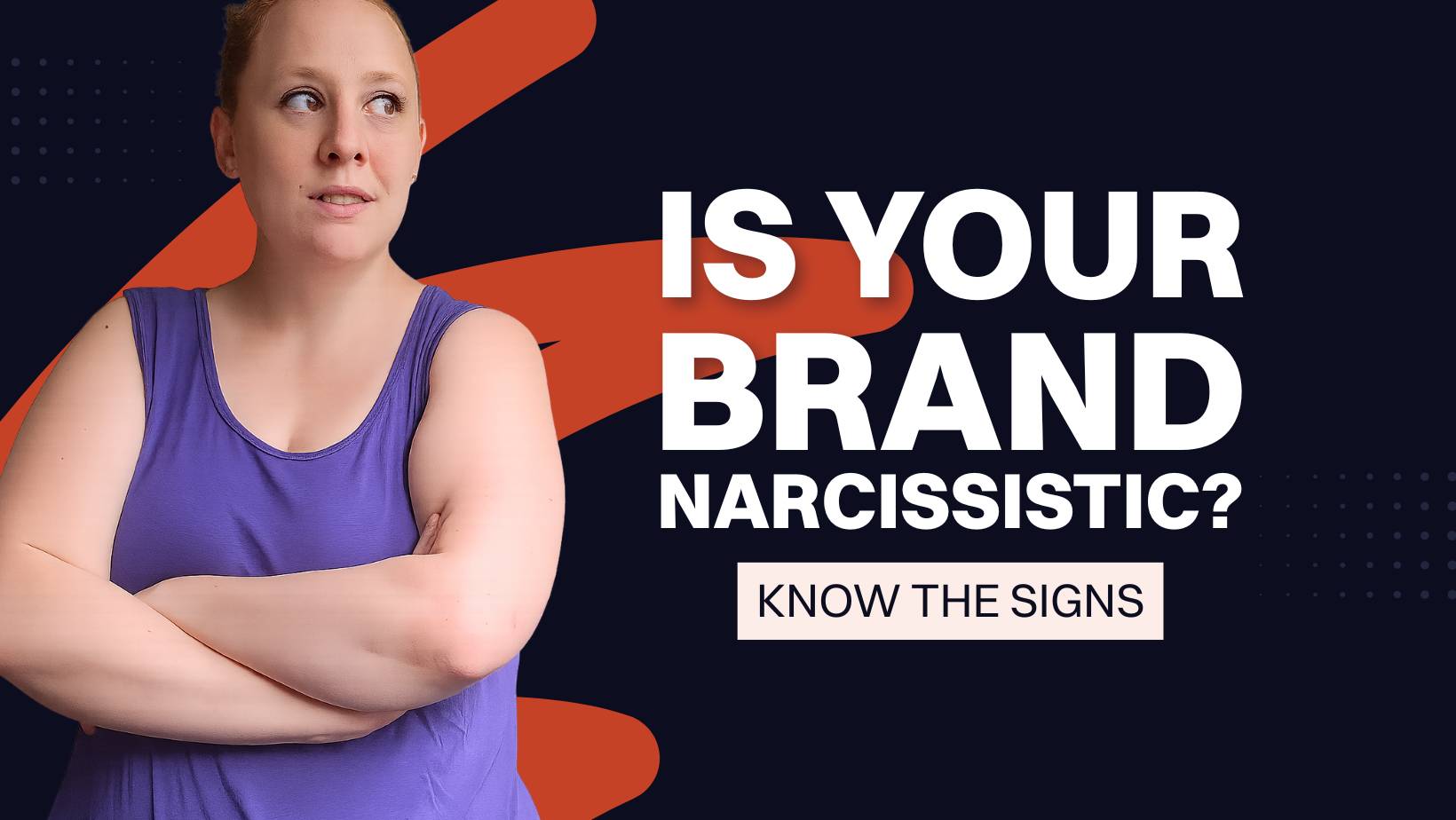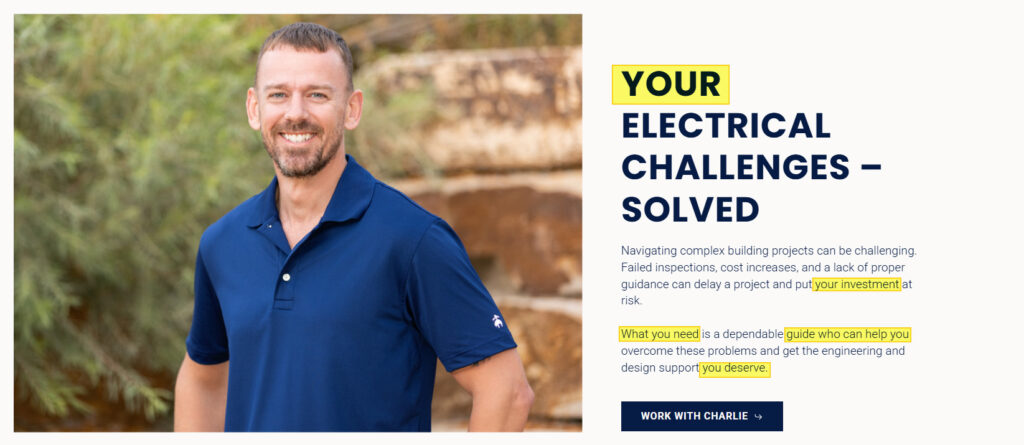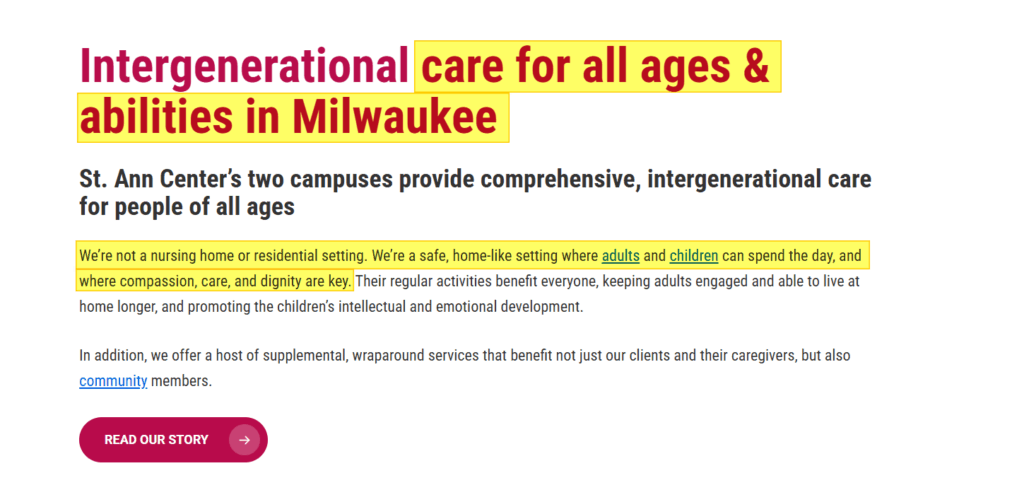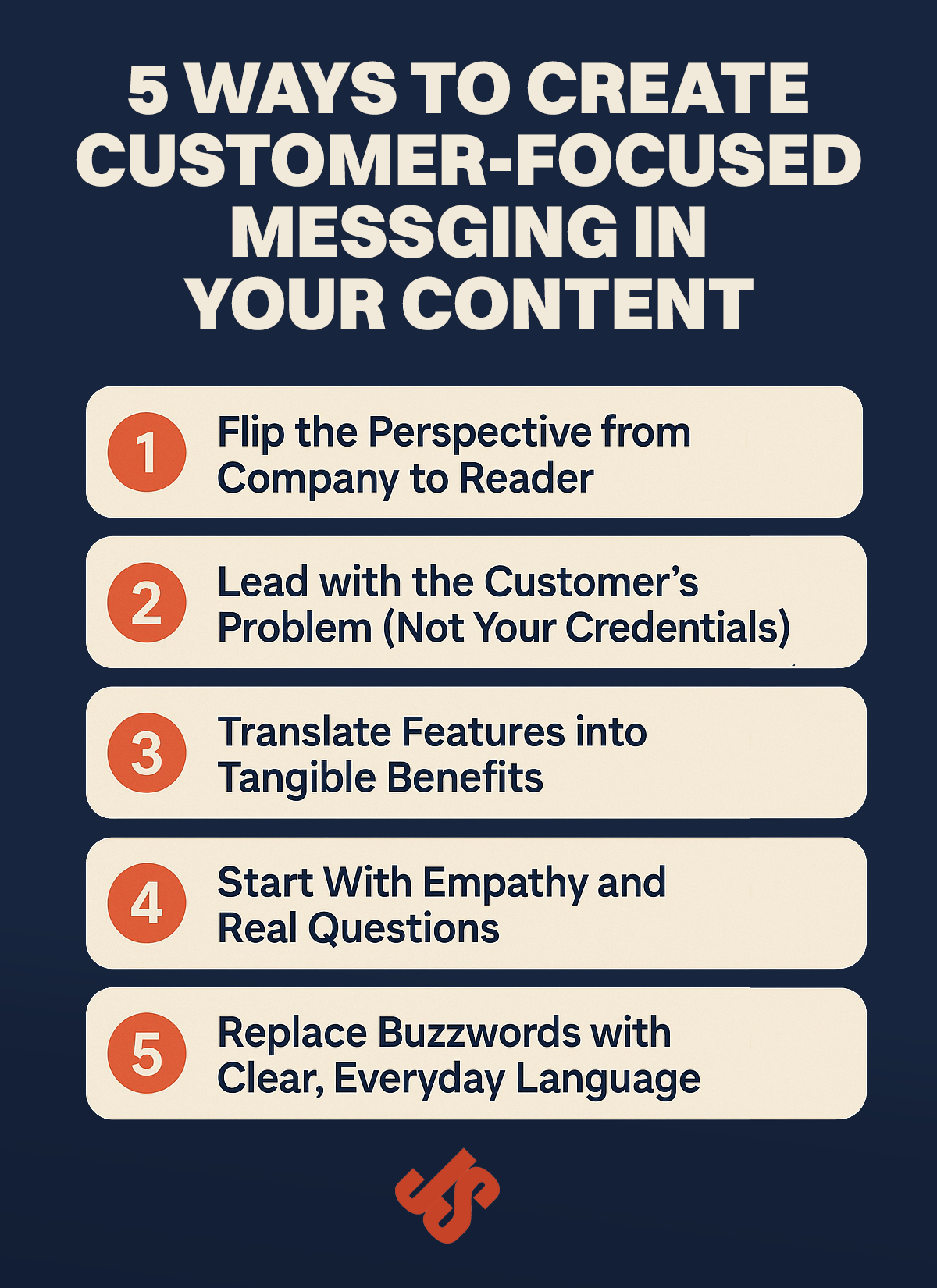5 Signs Your Marketing Content Focuses on You, Not Your Customer

Imagine being on a first date, only to find yourself in a situation where the other person talks about themselves the entire time. They list their accomplishments, dominate the conversation, and never ask a single question about you. By the end, you’re checked out—and already planning your exit.
That’s how your audience feels when your content is all about your brand.
Here’s the hard truth: when your marketing content centers on your own story without anchoring it to your audience’s needs, pain points, and priorities, you risk turning them off instead of drawing them in.
Today’s audience decides fast. They’re gone if you don’t speak to their needs within seconds.
We’ve seen this time and again: Brands talk about themselves with the best intentions but fail to answer a very basic question immediately…
“How can you help me?”
Let’s examine five signs that your content may be too brand-focused—and, more importantly, how to fix it.
5 Signs Your Marketing Content Is Too Company-Focused
It’s easy to fall into the trap of writing marketing content that sounds impressive to you and your team but completely misses the mark with your audience.
You mention your accolades, technology, team, and processes, yet somewhere along the way, the customer seems to vanish from the narrative.
It’s a natural instinct to showcase what makes your business great. But great marketing content isn’t about your business.
It’s about your reader. Your prospect.Your customer.
Here are five key indicators that your content is overly focused on your company, along with alternative strategies to enhance its appeal:
1. It’s All “We, We, We” (No “You”)
If your copy heavily uses “we,” “our,” and your company name and rarely speaks directly to the reader, you’re placing the brand in the spotlight, not the customer. This often signals internal thinking that hasn’t yet shifted toward audience empathy.
Strong messaging makes the reader the center of the story. Swapping “We offer 24/7 support” for “You get round-the-clock support, no matter where you are” isn’t just wordplay; it’s a mindset shift.
UX experts note that content that speaks directly to the reader (“you” instead of “we”) tends to produce higher engagement and lower bounce rates.

The headline and body copy on the Colorado Electrical Engineering homepage use second-person language throughout—“your electrical challenges,” “your investment,” “you deserve.”
This approach shifts the focus to the reader’s needs and problems, reinforcing that the content is written for them, not about the company.
2. Your Opening Pitch Is a Brag Sheet (Not a Value Proposition)
Leading with how long you’ve been in business or how many awards you’ve won rarely captures attention. Visitors care far more about their own goals and challenges than your company milestones.
Your opening should answer the unspoken question: “What’s in it for me?” Only after that’s clear do your credentials matter as supporting proof, not the headline.
The Edelman Trust Barometer shows that customers place much more trust in brands that understand their needs (versus those that tout their own accolades).
In other words, if you want to earn their confidence and interest, talk about the customer’s problem before you talk about yourself.
The homepage screenshot from St. Ann Center begins with a clear value statement that addresses the reader’s real-life concerns. Messaging like “care for all ages and abilities” and “where compassion, care, and dignity are key” speaks directly to someone wondering, “Is this the right place for my loved one?”
It prioritizes reassurance over credentials—right where it matters most.

3. Feature Overload, Benefits on Backburner
Listing out features without connecting them to user outcomes turns your content into a brochure. Customers aren’t looking for specs; they’re looking for solutions that improve their lives or business.
The real value comes when features translate into everyday wins:
- Less manual work
- Faster turnaround times
- More visibility
That’s where benefit-driven messaging wins.
In fact, an analysis of HubSpot platform users found that 57% reported increased sales revenue as a key benefit of using the tool—a result often credited to shifting focus onto customer benefits over just product benefits.
Highlight what your offering does for the customer, not just what it is.
4. The Content Doesn’t Address Customer Pain Points or Questions
Effective marketing anticipates and reflects the reader’s reality. If your content skips over the friction your customers face, it can come off as disconnected.
The best-performing copy often mirrors common frustrations and shows a path forward. If your audience doesn’t feel seen in your messaging, you’re asking them to make a leap they won’t take.
Gartner found that customers receiving valuable information during the buying journey are 2.8 times more likely to find the process easy and 3 times more likely to commit to a larger deal with less regret.
Customer-first messaging doesn’t just build confidence, it drives better outcomes.
5. Jargon, Buzzwords & Gobbledygook
Overused terms like “synergize,” “robust,” or “cutting‑edge” don’t clarify … they cloud. They distract from meaning and dilute your message.
Your audience doesn’t want buzz, they want clarity. That’s not just an opinion, it’s proven.
Unbounce’s 2024 report analyzed over 57 million landing page conversions and found a -24.3% correlation between the number of complex (3+ syllables) words and conversion rates. This negative impact on conversions is 62% stronger than it was in 2020.
Shifting Toward Customer-First Content
Shifting your content from business-first to customer-first isn’t about a total overhaul.
Often, it’s about tightening your lens and reorienting your voice. These five shifts will help bring your customer back into focus.
Flip the Perspective from Company to Reader
Audit your language. Is it about your company, or is it about the reader’s goals? A subtle shift toward “you” over “we” can reframe the entire tone.
Simple phrasing adjustments, “we provide” to “you get”, can immediately make your content more engaging and relevant to your audience.
Lead with the Customer’s Problem (Not Your Credentials)
The hook should reflect what’s on your reader’s mind, not your accomplishments. Start with a problem they recognize, and follow with how you solve it.
The most effective intros frame the stakes from the reader’s perspective, not your brand’s, by speaking to the heart of the client’s motivation: their mission and impact.
Instead of listing credentials, open with a clear message about what the customer is trying to achieve, and position the company as the partner that helps bring that vision to life.
This is grounded and focused on what matters to your audience.
Translate Features into Tangible Benefits
Every feature should point to a concrete outcome. If it saves time, reduces costs, or simplifies a task, clearly state that.
When describing a tool, always ask: “Why should this matter to my customer?” That answer is your benefit.
Start With Empathy and Real Questions
If your content doesn’t answer the questions your readers are already asking, it won’t land. Build messaging around their common concerns and lived context.
You don’t need to guess; listen to your customers. Ask your sales team what topics come up during calls, review support tickets, and incorporate their language into your content.
Replace Buzzwords with Clear, Everyday Language
Trade complexity for clarity. Write like you speak. If a phrase wouldn’t sound natural in a client conversation, it probably doesn’t belong in your copy.
You don’t need to “dumb it down”—you need to make it make sense. Here’s what that looks like in practice:
- Instead of “cutting-edge solutions,” say “tools that help your team move faster with fewer errors.”
- Instead of “empowering predictive analytics,” say “reports that help you spot problems early.”
- Replace “digital transformation” with “making your systems easier to use and manage.”
- Swap “seamless integration” for “tools that connect without extra training or IT support.”
- Ditch “future-proof platform” and go with “something that won’t need replacing in a year.”
When people understand what you’re saying, they’re more likely to stick around, engage, and act.

Create Better Marketing Content with JS Interactive
If your content feels like it’s missing the mark, it probably is. Most businesses don’t struggle because they lack value; they struggle because they haven’t learned to communicate that value in a way that resonates.
We help businesses turn brand-focused messaging into customer-driven content that builds connection, trust, and performance. Whether you’re starting from scratch or refreshing stale web copy, we’ll help you speak your customers’ language and get better results because of it.
Want content that actually converts? Let’s talk.